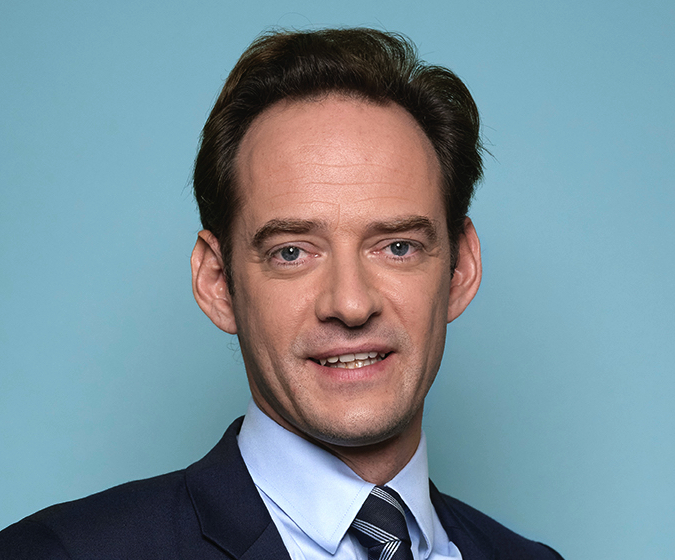Lyxor this week celebrates 20 years since the launch of the EURO STOXX 50 UCITS ETF. To mark this anniversary, Lyxor’s Head of ETF and Indexing, Arnaud Llinas, and Stephan Flaegel, Head of Indices and Benchmarks at Qontigo, discuss how both the underlying index and the ETF have evolved during these two decades, and explain how ETFs continue to lead a technological revolution in the financial field, in particularly in the context of ESG and thematic investing.

Arnaud Llinas
Head of ETF and Indexing, Lyxor

Stephan Flaegel
Head of Indices and Benchmarks, Qontigo
Arnaud, Stephan, how much has changed in the 20 years since the launch of the Lyxor EURO STOXX 50 UCITS ETF?
Arnaud Llinas (AL): “This is a very significant anniversary for Lyxor Asset Management. The EURO STOXX 50 is one of the top five indices in the world, alongside the S&P 500, Nasdaq, FTSE 100 and DAX. Twenty years ago was the right time to launch the Lyxor EURO STOXX 50 UCITS ETF. The EURO STOXX 50 was already the main benchmark for Eurozone equities in 2001, and in the past 20 years it has further cemented its role as the main index of reference for the region.
“It’s been an outstanding 20 years for ETFs, up on average 20% a year in Europe in terms of assets, thanks to an ever-expanding range of investors — from individual investors to multi-asset managers, diversified portfolio managers, and more recently a significant growth with private banks and retail investors, who are more aware than ever of the advantages that ETFs bring.”
Stephan Flaegel (SF): “The history of the EURO STOXX 50 ETF is synonymous with the history of index investing and of STOXX. Hence, this 20-year anniversary is especially meaningful for us. The outstanding feature over this period is how the ETF has established itself as a vehicle of choice for both strategic and tactical investments, and positioned itself right at the core of very different types of portfolios. The move to passive investing has been nothing short of a revolution that has democratized and facilitated investing. The Lyxor EURO STOXX 50 ETF has been at the center of this evolution in Europe, contributing to the EURO STOXX 50’s position as the undisputed benchmark for Eurozone blue-chips for trading, investing and tactical allocations.
“The success of the EURO STOXX 50 ETF has planted the seeds for ever more innovation, so that today, a wide range of investment strategies, including many reflecting sustainable investing, can be accessed efficiently through ETFs.”
Why have ETFs become so popular?
AL: “The revolution that Stephan mentioned is the growing awareness of how much ETFs have brough efficiency, simplicity, transparency, and, importantly, low cost to financial markets. The Lyxor EURO STOXX 50 ETF is the perfect illustration of this. It is an exact representation of the entire index, without the friction or liquidity costs of buying the basket of 50 shares. For example, if a retail investor wanted to buy the shares in each company in the index, it would cost them 2,500 euros. But investors can buy the ETF, giving them an investment in the complete EURO STOXX 50 range, for as little as 50 euros.”
SF: “ETFs have brought great efficiency to investing, and, for institutional and retail investors, the ease and affordability of trading an entire basket of stocks in one go is an unbeatable proposition. Within this efficient wrapper lies an underlying index that is transparent and rules-based, giving investors certainty and clarity as to what they hold. ETFs have provided resilient liquidity, which has been a huge benefit during the various crises we’ve seen in markets in the last two decades. Very few indices in the world offer the liquidity and tradability of the ecosystem around the EURO STOXX 50. Just to illustrate this, nearly 30 million futures tracking the index trade every month, further supporting liquidity in its ETFs.”
What does the future hold for the Lyxor EURO STOXX 50 ETF, and more broadly for ETFs?
AL: “ETFs have established themselves as an efficient investment model that continues to lead in technological innovation. Surveys point to increased usage in coming years, and investors will undoubtedly benefit from continued growth of the EURO STOXX 50.
“The focus now is on the new generation of investors – especially retail investors and private banks – looking for cheap and efficient investment vehicles. To better respond to their needs, we also offer a low-cost Core EURO STOXX 50 ETF. This next generation of investors is also looking beyond traditional allocation by markets and sectors, which is why we are seeing more thematic investments, and also a boom in ESG investments.
“On March 10th, the European Sustainable Finance Disclosures Regulation (SFDR) went into force, requiring asset managers to disclose more information on ESG products and to describe the climate transition elements of each asset in the prospectus where applicable. This is a significant moment that will have an impact on the future of ETFs, and I can foresee that in 20 years from now, ESG and non-ESG regulatory requirements will merge, and that all indices will have to include extra-financial criteria.”
SF: “I think we’ll continue to see significant growth in sustainable investing and to have a lot of interest in the ESG version of the EURO STOXX 50 index, with many pension funds and large asset owners adopting it in coming years as the benchmark for Eurozone portfolios. Sustainability is one of a dozen families built from the flagship EURO STOXX 50 and its methodology. As investing becomes ever-more sophisticated, I expect to see more solutions built around these index offerings, to the benefit of a wider public. This will further enhance the EURO STOXX 50 universe and pave the way for more successful and popular ETFs. We are extremely proud and pleased with the success of the Lyxor EURO STOXX 50 (DR) UCITS ETF and look forward to continuing developing the Qontigo-Lyxor partnership over the next two decades.”
